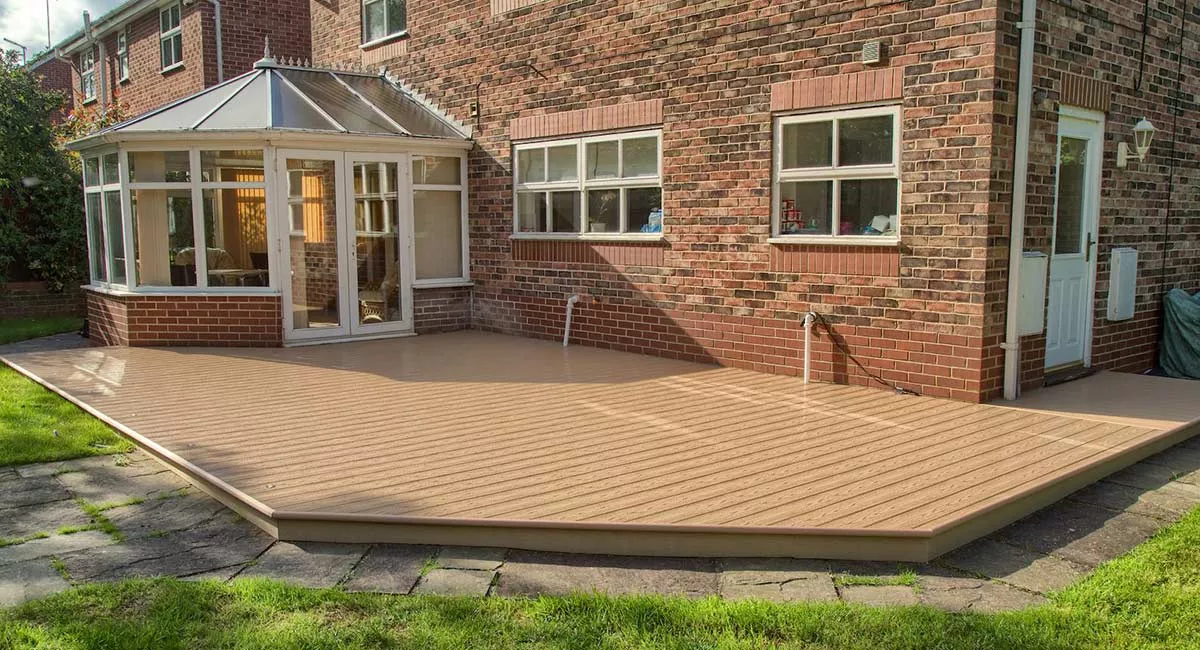Ensuring safety on your deck is paramount, especially during wet or icy conditions. Non-slip decking provides an effective solution to minimise the risk of slips and falls, making your outdoor space safer for family, friends, and pets. Understanding how to make decking non-slip is essential for maintaining a secure environment year-round.

Introduction to Non-Slip Decking
Slippery decking poses a significant safety hazard, particularly in areas prone to rain, snow, or humidity. Falls on slippery surfaces can result in serious injuries, making it crucial to invest in non-slip solutions. By incorporating this, you enhance the useability of your outdoor space and create a safer environment for everyone. At Lakeland Verandahs, we priortise safety with our slip resistant decking.
What Makes Decking Slippery?
Several factors contribute to decking becoming slippery over time. Moss, algae, and mould growth can accumulate on the surface, creating a slimy layer that reduces traction. Moisture from rain, snow, or dew can also make decking slippery, especially when combined with organic debris. Signs of a slippery deck include visible algae or mould, greenish discoloration, and a slick surface when wet.
Choosing the Right Material
Selecting the appropriate decking material is crucial for achieving non-slip properties. Look for slip-resistant decking profiles designed to improve traction, even in wet conditions. Our modern decking made from UPVC (unplasticized polyvinyl chloride) offers excellent slip resistance and durability, making it an ideal choice for outdoor spaces. Its low-maintenance nature and resistance to moisture and mould make UPVC decking a practical solution for non-slip requirements. Consult with your decking contractor to find the best solution for your outdoor space.
How to Stop Decking Being Slippery
If you’re wondering how to make decking non slip, follow these 6 simple decking ideas.
- Regularly remove leaves, twigs, and fungus from your decking to prevent buildup. Use a stiff-bristle brush for algae or fungus, ensuring protection for your decking boards.
- Watch for green spots or streaks on your decking, indicating moss or algae growth. Invest in moss and algae killing products if necessary.
- Clean your deck regularly by sweeping away debris with a broom or clearing standing water after rainfall. Use a thin tool to remove stuck leaves between decking boards, and clear your deck before predicted snowfall to prevent excessive weight buildup.
- Utilise rubber matting to create a non-slip surface during winter. Lay down mats for safe walking paths, then store them away for reuse in the spring.
- Safely remove ice buildup from your deck. Avoid using metal tools or salt, as these may damage your decking.
- For a hassle-free, long-term solution, consider installing slip resistant UPVC decking from Lakeland Verandahs. This ensures safety and durability, requiring minimal maintenance.
Contact Lakeland Verandahs for information on a range of high-quality anti-slip decking boards or take a look at our Decking Guide to create a safe and long-lasting outdoor space. Our experts are here to provide advice and assistance for all your deck needs.